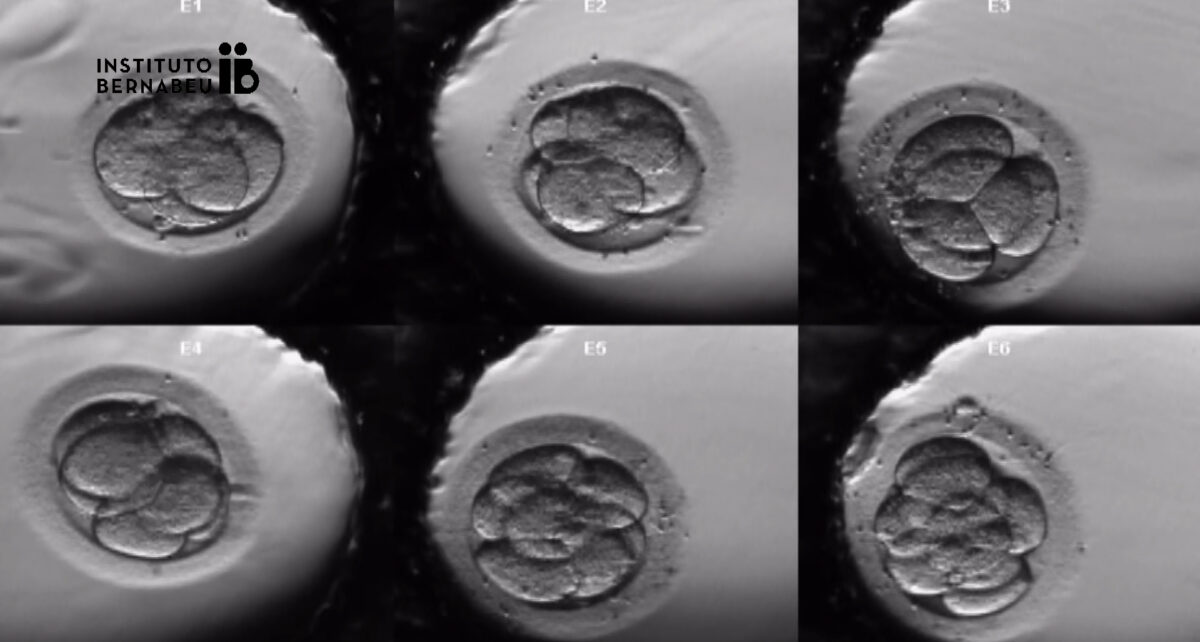
Time-lapse in assisted reproduction. Current situation
Índice
What is Time-Lapse in in vitro fertilization, IVF?
Time-lapse technology (TTL) consists of monitoring embryonic development and making a film of embryonic evolution by means of a video camera introduced either in a conventional incubator or incorporated in a special incubator. A special software reconstructs the images and allows us to view the development of the embryos.
It is often known by its commercial name: “Geri®”, “EmbryoScope®”, “Primo Vision™”, , “Esco Miri®” o “EEVA™”.
Development of Time-Lapse systems in assisted reproduction
TTL was introduced in assisted reproduction laboratories 23 years ago (Payne et al., 1997*). However, it was not until 2010 when, as scientific community, we started to predict which embryos could reach the blastocyst stage and, therefore, be more likely to lead to pregnancy (Wong et al., 2010*).
This system extended rapidly in 2011, not only to monitor the embryonic evolution, but also a proper incubation system that allowed visualization of the embryos without the need of removing them from the incubator. Therefore, it offers an uninterrupted and stable culture system.
Additionally, integrated software that allows the analysis of the information gathered from embryonic observations was developed, making it possible to run complex algorithms and selecting or rejecting embryos to be transferred to the maternal uterus.
Is embryonic time-lapse an added value?
In the last decade it was not demonstrated that the introduction of this technology in the treatment improves clinical outcome of an in vitro fertilization/ICSI cycle.
Majority of published studies are poorly designed and do not clearly demonstrate superiority when using this technology. In case of these studies, only culture conditions are modified and so they could directly improve the results and not the time-lapse system and its algorithm for selecting the embryos.
In fact, the latest Cochrane review (Armstrong et al., 2019*) included the evaluation and analysis of nine quality studies and found insufficient evidence regarding clinical pregnancy, miscarriage rate and percentage of live births after IVF/ICSI.
Progress with the embryo time-lapse system
The detailed visualization by means of TTL of all the events that take place during the fertilization and embryonic development until the moment of implantation makes it possible to know new parameters that could influence the potential of an embryo to develop into a full-term pregnancy. In this sense, research lines are being developed that will correlate certain parameters with embryonic chromosomal alterations or even with the response of the embryos to cryopreservation processes.
In this way, knowledge in the area of embryology is being promoted by this technology.
Finally, it should be noted that attempts are being made to incorporate high-powered computer processes into TTL, using artificial intelligence or “machine learning“. This way, all the embryonic parameters could be analyzed, together with their images, and very powerful analyses could be established that would allow us to make an optimal embryo selection.
Time-lapse technology at Instituto Bernabeu
While time-lapse technology may not appear to have a positive impact on success rates, all Instituto Bernabeu laboratories have Geri time-lapse incubators which mean that, in addition to real time monitoring, all our patients can benefit from stable and uninterrupted culture up until blastocyst stage.
References
- Preliminary observations on polar body extrusion and pronuclear formation in human oocytes using time-lapse video cinematography. Payne D, Flaherty SP, Barry MF, Matthews CD. Hum Reprod. 1997 Mar;12(3):532-41.
- Non-invasive imaging of human embryos before embryonic genome activation predicts development to the blastocyst stage. Wong CC, Loewke KE, Bossert NL, Behr B, De Jonge CJ, Baer TM, Reijo Pera RA. Nat Biotechnol. 2010 Oct;28(10):1115-21.
- Time-lapse systems for embryo incubation and assessment in assisted reproduction. Armstrong S, Bhide P, Jordan V, Pacey A, Marjoribanks J, Farquhar C. Cochrane Database Syst Rev. 2019 May 29;5(5):CD011320.
May be of interest:
- Timelapse at Instituto Bernabeu.
- Types of embryos according to their quality and evolution
- Normal and abnormal divisions of embryos
- Embryo blockage – why don’t all embryos develop the same way?
- Treatment of embryo implantation failure and repeated miscarriage
- Treatment for low ovarian reserve
Dr. Jorge Ten, Director of Embryology Unit at Instituto Bernabeu
